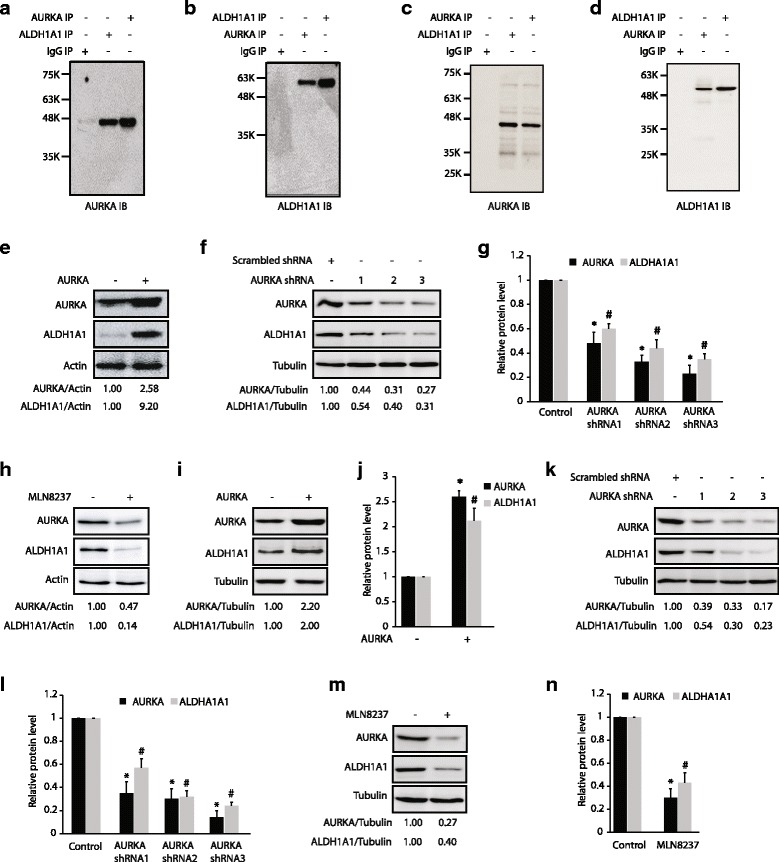Fig. 2.

AURKA binds ALDH1A1 and positively regulates its protein levels. a AURKA and ALDH1A1 associate in BxPC3 cells. AURKA (lane 3) and IgG (lane 1) were used as positive and negative controls, respectively. b AURKA and ALDH1A1 associate in BxPC3 cells. c, d AURKA and ALDH1A1 associate in Panc1 cells, as shown by reciprocal immunoprecipitation. Each experiment was done at least three independent times. Representative data are shown. e AURKA overexpression increases ALDH1A1 levels. f AURKA ablation using three different AURKA shRNAs depletes ALDH1A1 in BxPC3 cells. g Histogram shows relative band intensities normalized to the corresponding tubulin level. Data are expressed as x-fold change relative to control; values shown as mean ± SEM of three independent experiments. * and # indicate statistically significant differences with respect to controls for AURKA and ALDH1A1 proteins, respectively. p < 0.05 analyzed by two-way analysis of variance. h AURKA inhibition using MLN8237 (1 μM for 16 h) decreases ALDH1A1 levels in BxPC3 cells. i AURKA overexpression increases ALDH1A1 levels in Panc1 cells. j Histogram shows relative band intensities normalized to the corresponding tubulin level. Results are mean ± SEM of three independent experiments. *p < 0.05 vs. AURKA control; #p < 0.05 vs. ALDH1A1 control analyzed by two-way analysis of variance. k AURKA ablation using three different AURKA shRNAs depletes ALDH1A1 in Panc1 cells. l Histogram shows relative band intensities normalized to the corresponding tubulin level. Results are mean ± SEM of three independent experiments. *p < 0.05 vs. AURKA control; #p < 0.05 vs. ALDH1A1 control analyzed by two-way analysis of variance. m AURKA positively regulates ALDH1A1 using its kinase activity in Panc1 cells. n Histogram shows relative band intensities normalized to the corresponding tubulin level. Data shown are mean ± SEM of three independent experiments. *p < 0.05 vs. AURKA control; #p < 0.05 vs. ALDH1A1 control analyzed by two-way analysis of variance. Data used to generate the summary statistics shown in panels g, j, l, and n are reported in Additional file 3
